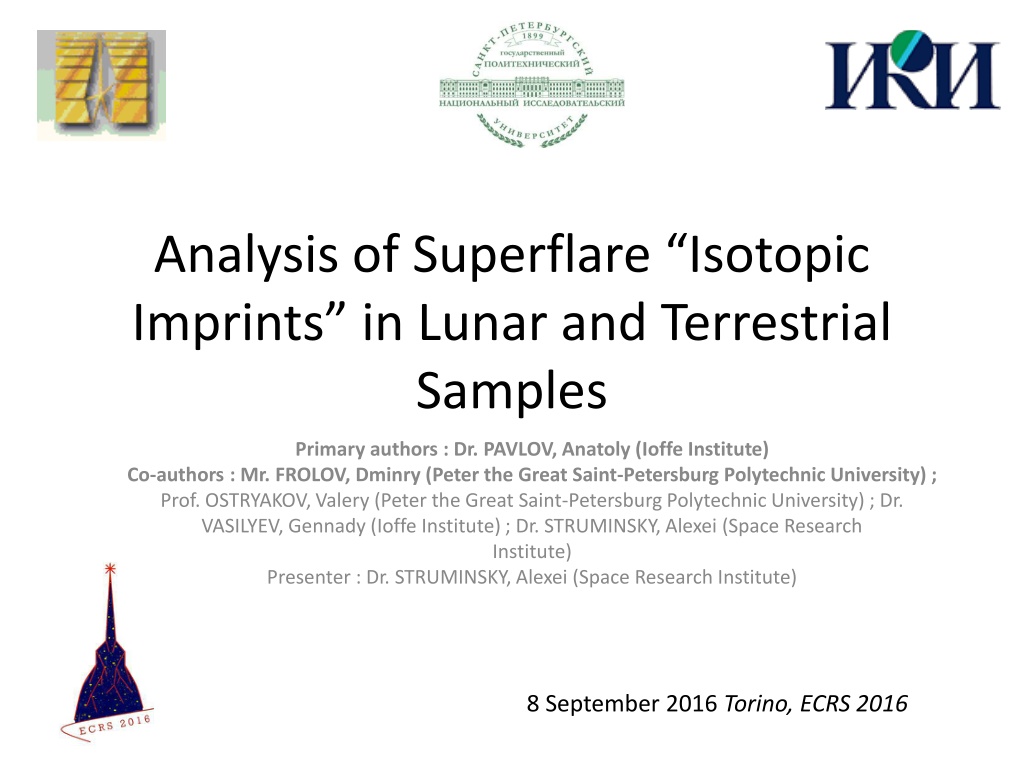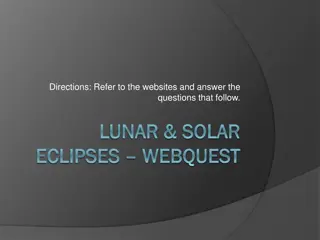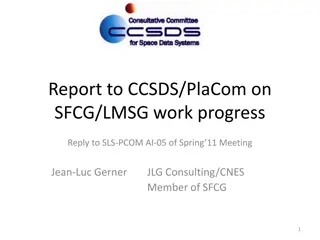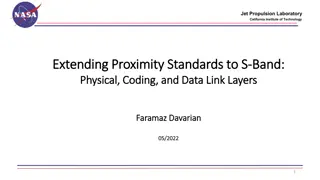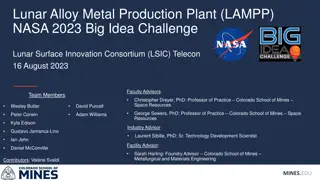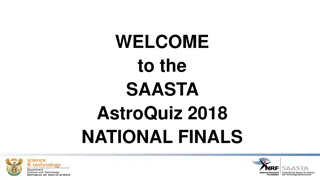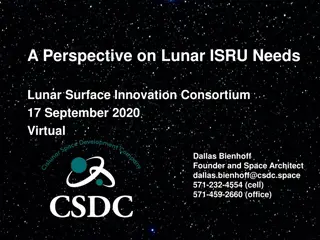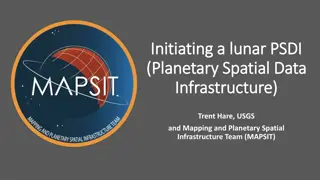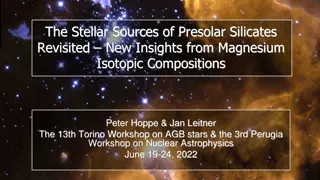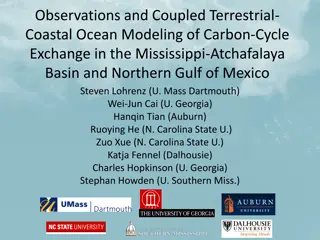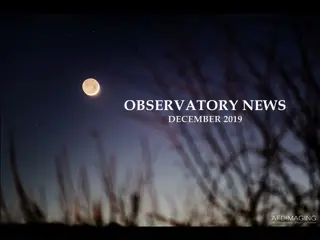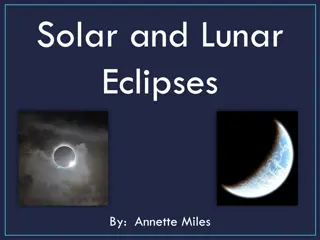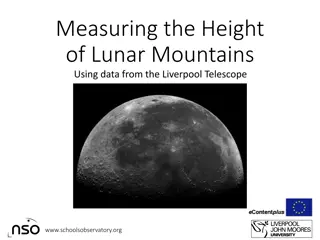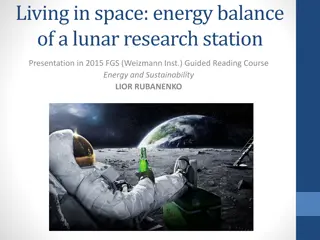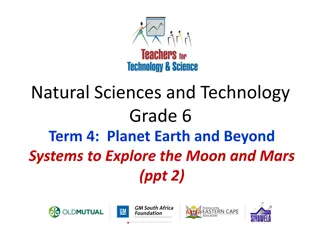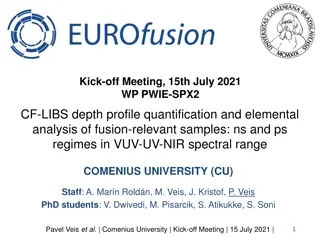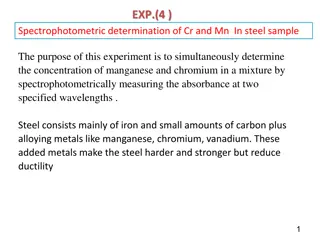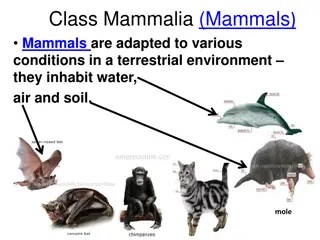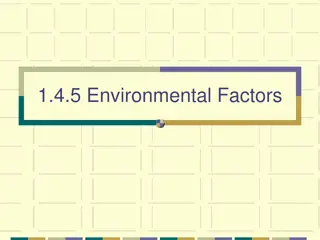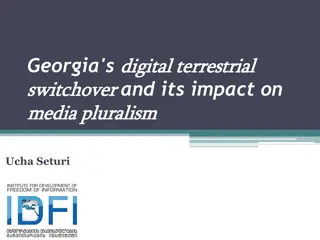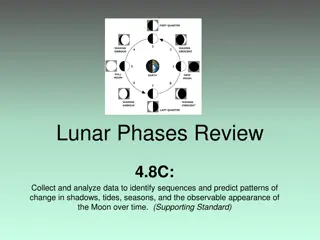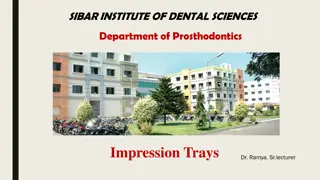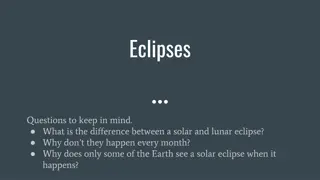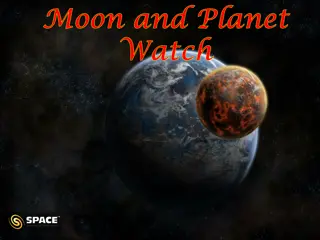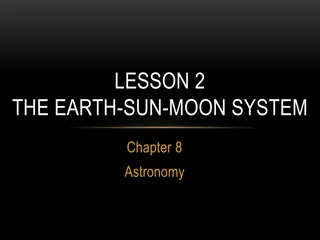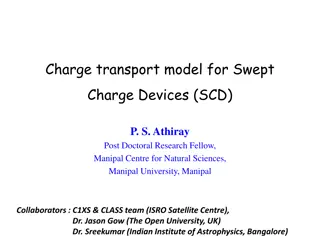Analysis of Superflare Isotopic Imprints in Lunar and Terrestrial Samples
Researchers investigate isotopic imprints in lunar and terrestrial samples to understand extreme solar events and their impact on atmospheric radiocarbon concentrations. Using 10Be and 36Cl data, they analyze the solar proton spectra and energy fluxes associated with these events, shedding light on past cosmic phenomena and their effects on Earth.
Download Presentation

Please find below an Image/Link to download the presentation.
The content on the website is provided AS IS for your information and personal use only. It may not be sold, licensed, or shared on other websites without obtaining consent from the author. Download presentation by click this link. If you encounter any issues during the download, it is possible that the publisher has removed the file from their server.
E N D
Presentation Transcript
Analysis of Superflare Isotopic Imprints in Lunar and Terrestrial Samples Primary authors : Dr. PAVLOV, Anatoly (Ioffe Institute) Co-authors : Mr. FROLOV, Dminry (Peter the Great Saint-Petersburg Polytechnic University) ; Prof. OSTRYAKOV, Valery (Peter the Great Saint-Petersburg Polytechnic University) ; Dr. VASILYEV, Gennady (Ioffe Institute) ; Dr. STRUMINSKY, Alexei (Space Research Institute) Presenter : Dr. STRUMINSKY, Alexei (Space Research Institute) 8 September 2016 Torino, ECRS 2016
Mekhaldi et al, 2015 The origin of two large peaks in the atmospheric radiocarbon (14C) concentration at AD 774/5 and 993/4 is still debated. There is consensus that these features can only be explained by an increase in the atmospheric 14C production rate due to an extraterrestrial event. The authors provided evidence that these peaks were most likely produced by extreme solar events, based on several new annually resolved 10Be measurements from both Arctic and Antarctic ice cores. Using ice core 36Cl data in pair with 10Be, they showed that these solar events were characterized by a very hard energy spectrum with high fluxes of solar protons with energy above 100MeV. Experimental results 14C 10Be 36CL Enhancement relative background 4 3.4 6.3
In this work OUTPUT INPUT 14C Spectra of GCR, solar protons Model for the Earth atmosphere (Pavlov, Ostryakov, Vasiliev, Frolov) 10Be 36Cl COMPARE 775 AD
METHOD Terrestrial samples We used the standard GEANT4.10.0 code for simulations of atmospheric interactions of high-energy charged particles and gamma-rays. Production rates for 14 , 10 and 36Cl were calculated for 0-130 km altitudes with 1 km step with the isotropic particle flux penetrating the Earth's atmosphere. The yield function of a nuclide is defined as its integrated production in all channels induced by the primary interacting particle of a given energy.
775 AD, model calculations Enhancement relative observations 14C F(1956)*75.6 = F(775) F(1972)*283= F(775 ) F(2005)*620= F(775) 10Be 2 36Cl 1.35 1.5 9 2 2.2
Ultimate spectra of solar protons Strumimsky, 2015 Propagation limits for different values of the IMF strength. (Freier&Webber, 1963). Spectra of non relativistic ( =2.5) and relativistic ( =4) solar protons (Syrovatsky, 1961) . Red - - normalised to j (E=10 MeV, B=100 ) Green -- normalized to GCR intensity at 20 GeV Brown -- normalized to GCR intensity at 100 GeV. Blue line - the spectrum of GCR. 100 nTl soft mean hard J(>30 ) F(>30 ) J(>200 ) F(>200 ) 934 4.2 109 244 9.2 107 4.9 105 1.8 1011 13981 5.3 109 4.9 105 1.8 1011 1.7 105 6.4 1010
775AD, ultimate spectra Enhancement relative observations 14C Soft*149 medium *1.2 hard* 0.074 10Be 1.8 2 2 36Cl 7 2.4 1
Lunar samples AJT Jull, S Cloudt, DJ Donahue, JM Sisterson, RC Reedy, and J Masarik. 14C depth profiles in Apollo 15 and 17 cores and lunar rock 68815. Geochimica et Cosmochimica Acta, 2(17):3025 3036, 1998. K Nishiizumi, JR Arnold, CP Kohl, MW Caffee, J Masarik, and RC Reedy. Solar cosmic ray records in lunar rock 64455. Geochimica et Cosmochimica Acta, 73 (7):2163 2176, 2009
In this work OUTPUT INPUT Spectra of GCR, solar protons Model for lunar samples (Pavlov, Ostryakov, Vasiliev, Frolov) 14C 26Al Number of possible events
METHOD Lunar Equilibrium densities of long living isotopes 14 , 26Al, (origin by CR interaction = decay) for different models (BIC and BERT) of internal nuclear cascade within GEANT described by BIC, but 26Al and 10Be by BERT There is an excess of radionuclei density within first cm s of lunar kerns in comparison with their production by GCR, it s of solar origin (SCR) An estimate of event frequency for events similar to the 775AD event. An impact is less than excess. years, 26Al scale 1-2 billion years 14 and 36Cl are better 14 scale 10-20 thousands
Lunar samples, 775AD 14 less than one event per 3000 years on a scale of <20000 years, 26Al - the same but on a scale of 1-2 million years. Like 1956 14 - less than one event per 10000 years on a scale of <20000 years, 26Al less than one event per 60000 years on a scale of 1-2 million years. Like 1972 14 C (BIC) at/cm^3 at 1 g/cm*2 8 7 1.4 5 8.7 5 26 Al (BERT) at/cm^3 at 1 g/cm*2 10 10 1.3 5 9,5 5 observations 1956 1972
Lunar samples Ultimate spectra 775AD observations 1.17 8 Model, soft spectrum 7,1 4 Model, medium spectrum 5,9 6 Model, hard spectrum 1.8 7 14C (BIC) at/cm^3 at 1 g/cm*2 26Al(BERT) at/cm^3 at 1 g/cm*2 1.8 10 7 5 2.9 7 4.9 7 14 - less than one event per 3000 years on a scale of <20000 years, 26Al the same but on a scale of 1-2 million years. 14 - less than one event per 1800 years on a scale of <20000 years, 26Al less than one event per 10000 years on a scale of 1-2 million years. 14 less than one event per 330 years on a scale of <20000 years, 26Al - less than one event per 1000 years on a scale 1-2 million years. soft Medium hard
Conclusions The ultimate spectra (Struminsky, 2015) do not contradict to radionuclide production in the Earth atmosphere and Lunar rocks. Modeling of global radionuclide production in the Earth atmosphere during the 775AD event with different spectra of solar protons showed an excess by several times of 10 Be and 36Cl isotopes in comparison with observation for production of 14 equal to observations. An agreement of measured and calculated values is possible under an assumption that majority of 10 Be and 36Cl have been produced in the polar troposphere. Additional investigations are necessary. A comparison of calculated and measured densities of radionuclide in the upper layer of lunar soil gives a frequency of superflares on a scale of 20000 years is 1 event per 330 years for hard events and per 10000 years for soft . On a scale of 1-2 million years one hard event per 1000 years for events and one soft event 60000 years.
